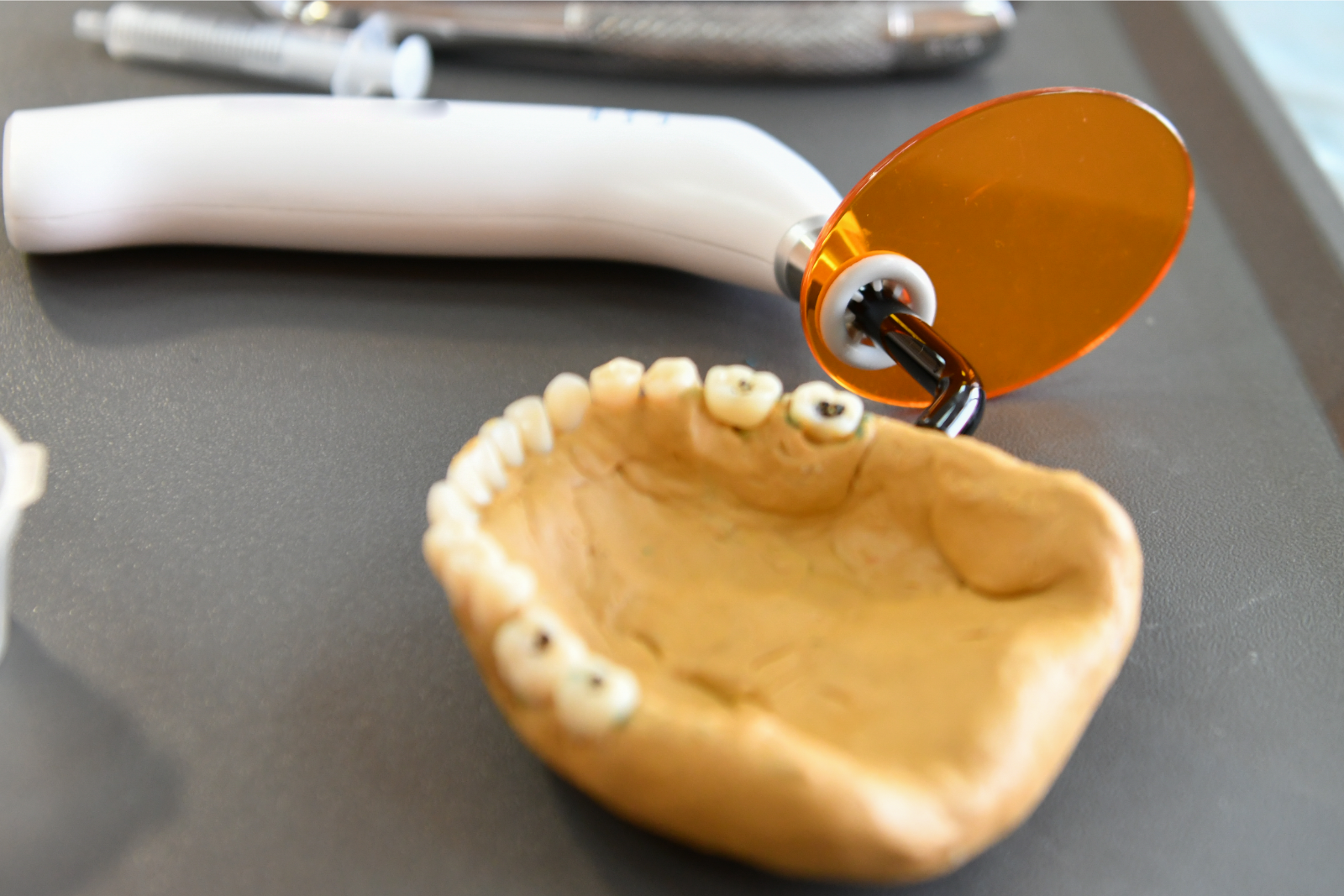Once upon a time, if you had a cavity, you went to the dentist and got a filling. The end. In today’s world, however, there seems to be endless options for how to fill in those pesky pockets of tooth decay. If you’re confused, don’t feel bad. Our dentists will be happy to walk you step by step through all of your choices. But it can’t hurt to get a general idea of the type of filling you may be interested in if the need arises.
The Facts on Fillings: Amalgam vs. Resin Composite
If you do need a filling, your dentist will generally recommend either an amalgam filling or a composite filling. They both have their place in modern dentistry, and both have their pros and cons. Amalgam fillings have been around for centuries, with evidence of use as far back as the Tang Dynasty in China (AD 618-907). They are usually made from some type of metal, or a blend of metals such as silver, copper, tin, mercury, and zinc. They are more often known as a silver or gold filling. Amalgam fillings are incredibly strong and last a very long time – upwards of 15 years. If your tooth is showing a very large area of decay, or the damaged tooth is one of your back teeth, your dentist may recommend an amalgam filling. If you have dental insurance, these types of fillings are also usually covered 100%. However, they have fallen out of favor due to their appearance. Gold and silver fillings are very noticeable, especially when you eat, smile, or laugh. Another drawback is that eventually, silver fillings can discolor the entire tooth, leaving it dark and dull. Most people prefer to avoid this if possible.
And if that is the case, you would move to the other option – composite fillings. Tooth colored composite fillings first came into being in the 1960s and are usually made from some type of combination of acrylic and ceramic. The main advantage of a composite filling is it can be made to blend in perfectly with your natural teeth and are almost undetectable. It also does not require as much enamel removal and less needs to be done to prepare the tooth, leaving more of your natural tooth structure intact. There are two main drawbacks to tooth colored fillings: cost and durability. They are more expensive than amalgam fillings and don’t last as long – only between 7-10 years.
What Materials Are Fillings Made Of?
Filling materials differ depending on the type of filling you’re discussing.
Amalgam Fillings
Dental amalgam fillings are very straightforward. They’re made from combining liquid mercury with a silver, tin, and copper alloy. When the mercury is mixed together with the other metals, it creates a reaction called an amalgamation reaction. It forms into a workable grey mass of filling material that is used to fill the void left in a tooth by tooth decay. Prior to 1986, amalgam was made of 65% silver, 29% tin, and 8% copper. It was found that changing the compositional standard to 40% silver, 32% tin and 30% copper gave the fillings better structure.
Gold fillings are made from 60% gold, with the other 40% a mixture made from platinum, palladium, and silver. All four of these metals are known for their low reactivity with human tissue, and also work really well with glass ionomer cement. Using an ionomer cement is less sensitive for some people as opposed to the way composite and porcelain fillings are bonded to the tooth. Gold fillings require two visits to the dentist, as the inlay must be created in a lab, which can take about two weeks. In the meantime, your dentist would place a temporary filling until the permanent one could be placed.
Composite Fillings
There are three main types of composite fillings: composite resin fillings, glass ionomer fillings and porcelain inlays. A composite resin dental filling is made from ceramic particles, usually powdered quartz or silica which are added to a resin base. Once the tooth is prepared, the resin is bonded onto the surface of the tooth using a special light. Glass Ionomer fillings are made from a composite material of acrylic and glass. Think of this type of filling as a type of cement, and they work well if the tooth decay reaches deep into the tooth root. Ionomer fillings also release fluoride to help protect the teeth from further decay. Porcelain inlays are created using a digital technology called CADCAM and allow a laboratory to create a perfectly fitted solution custom-made for your teeth. Tooth onlays are made the same way and work similarly to a dental crown. Porcelain inlays and onlays are hard wearing and last a long time, but they can be a very high-cost option.
What is the Best Material for Dental Fillings?
The best material is always the one that works best for your particular situation. Unfortunately for many of us, the path to good oral health is paved with cavities and fillings. Part of getting good dental care is finding a dentist that listens to their patients’ concerns and helps them search for the best treatment for their cavity. If you’re located in the greater Minnesota area or around the Twin Cities, schedule your appointment with us! Whatever type of filling you wind up with, your dentist will cover all your options, and give you recommendations on how to keep your teeth in good health.
